Through the Past, Teutonically: We Drive Every Generation of the Volkswagen Golf GTI in a Single Day
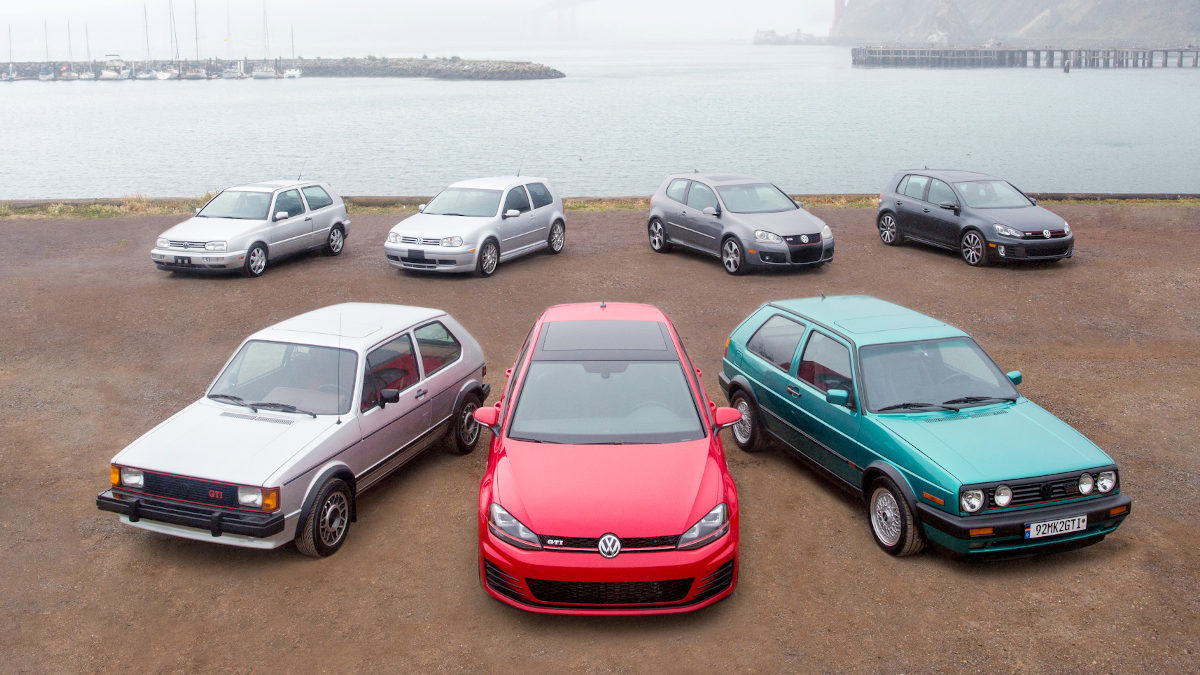
I'm not proud of it, but for a good chunk of the late 20th century I had what is known in polite circles as "a problem." Despite caring parents and a healthy childhood environment, as a young adult I developed a financially and socially crippling addiction to Volkswagens. While the older kids were mainlining air-cooled Beetles, Buses, and Karmann Ghias, my taste ran towards the water-cooled Mk 1 and Mk 2 Golf/Rabbit models.
What started as a cheap thrill rapidly became a habit. Over the course of my affliction, I would own nearly every example: Two-door, four-door, and GTI? Yep. Mega-rare Mk 2 GT four-door with a manual transmission. Check. Pre-Cabriolet Rabbit Convertible, Scirocco, and Pickup? Yeah, those too.
So, when VW invited me to Osnabrück, Germany, to drive every generation of the Golf GTI back to back, I had to take stock. Would this be a joyous trip down memory lane? Or would it catapult me back into the throes of darkness, aimlessly scrolling Facebook Marketplace and Craigslist looking for my next fix in a vain effort to revisit that euphoric state?
I took the plunge and headed to Germany. My expectations were cautiously fixed as I approached a Mk 1 GTI to kick off the journey.
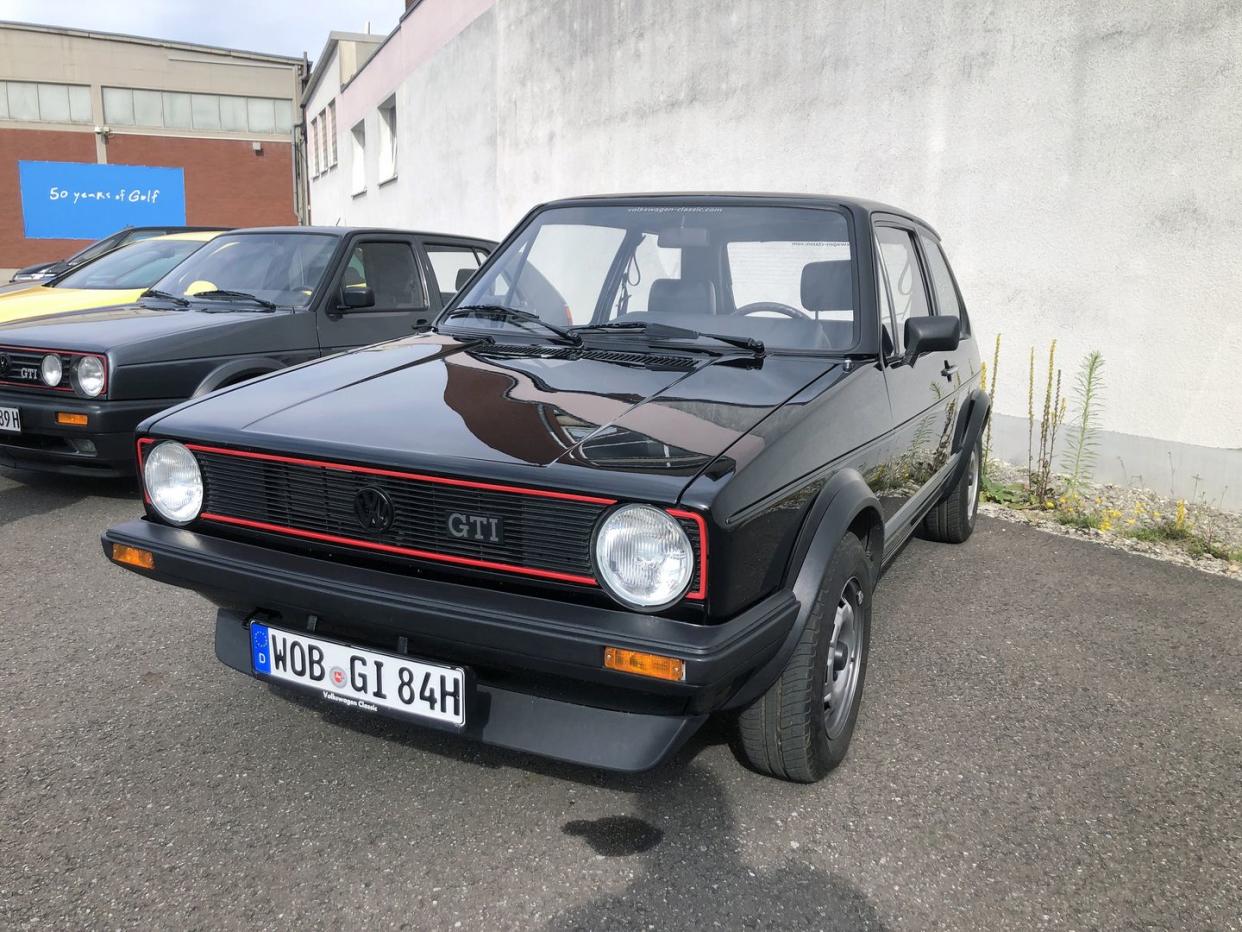
Mk 1 GTI
Unlike the U.S. GTI, which didn't arrive until the 1983 model year wearing 14-inch snowflake alloys, this 1970s-era German-market car rolled on 13-inch steel wheels. Although the first Euro-Golf GTIs were carbureted, the restored version I sampled featured a fuel-injected 1.8-liter four-cylinder. Regardless, the feels started as soon as I opened its door, triggering fuzzy images of joy, ambition, and general youthful arrogance.
Thirty seconds after setting off, I was shot out the opposite end of the time tunnel to where shifter throws are measured in scads of inches, gears grind embarrassingly—those synchros always did need a few minutes to reach optimum operating temp—and I absentmindedly dug between the seats searching for that fresh cassette dub of Double Nickel on the Dime, from the Minutemen on SST Records. Reality intervened, and I settled for a soundtrack composed of the rattles and squeaks of brittle plastic rubbing against somehow even more brittle plastic that constitute the interior's trim.
Like the fully analog Blaupunkt dash-mounted radio cassette player, the Mk 1 has little interference or assistance to polish the experience. The steering and brakes are resolutely manual and are better for it. In a car weighing roughly 2000 pounds, depending on market spec and the level of equipment, power assists would just add weight with little reward.
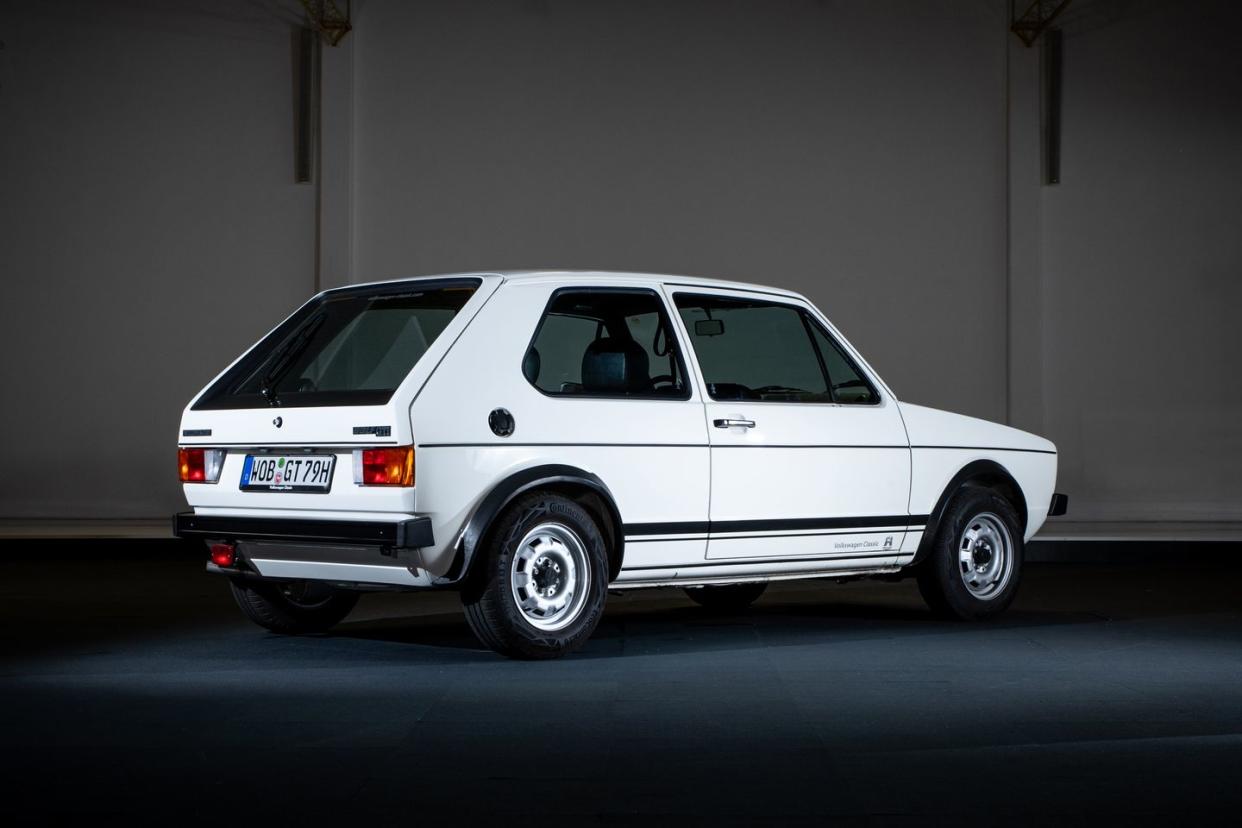
Throttle response is instantaneous—thank you, properly operating Bosch CIS mechanical fuel injection—and the steering and braking inputs are direct. Road and wind noise are omnipresent. But much like driving those other VW/Porsche touchstones, i.e., the Beetle and the first-gen 911, vehicle speed and cornering ability in the Mk 1 GTI are rather abstract concepts. You're traveling at Mk 1 GTI speed, and good times are quantified in grins, not lap times.
And make no mistake: It is a good time, particularly when the inside rear wheel lifts in hard cornering, then gently returns to terra firma without ruining your day. The chassis loves it, asking for more. Hell, it's fun, even. (In 1983, C/D testing revealed the Camaro Z/28, a car we called "the closest thing to a race car built on an American assembly line, closer even than the Corvette," had 0.83 g of grip; the 1983 GTI pulled 0.87 g.)
There is no air conditioning, and there is no "me" time. Driving the Mk 1 GTI is a full-time job, even at the laggardly pace of surrounding urban traffic. As a fully analog time machine, the Mk 1 fulfills its mission perfectly.
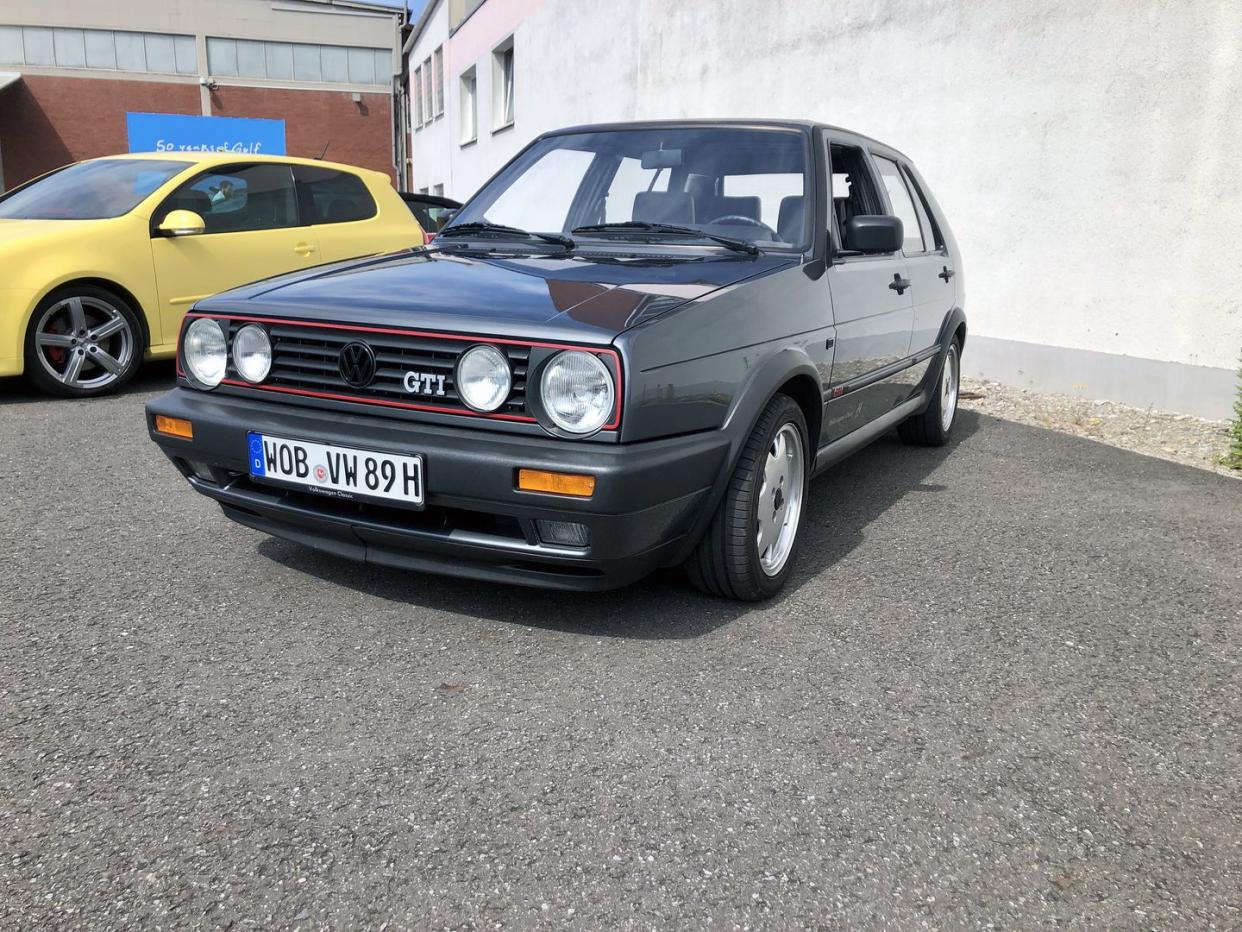
Mk 2 GTI
The gap between the Mk 1 and Mk 2 GTI is vast. The Mk 2, which hit the States in 1985, is larger, quieter, and more refined. The Mk 1 GTI, despite being front-engine, front-drive, and liquid-cooled, still maintains a spiritual connection to the Beetle. The Mk 1 says, "Look how much you can do with so little," whereas the Mk 2 GTI portends the future of fun-to-drive compact European cars with a hint of sophistication. It looks great and drives like an entirely different vehicle, although it retains the wheel-lifting solid-ish rear axle, albeit with a more compliant attitude.
There's still no power steering, and the clutch engagement (still cable operated; hydraulics followed later) of this example is ludicrously high—fellow members of the VW cult will undoubtedly remember that the U.S. Mk 2 marked the debut of VW's "self-adjusting" clutch cable; retrofitting to standard cable soon became standard practice.
Restored to a high standard, the Mk 2 GTI drove better than any Mk 2 I ever owned, and it felt maybe 20 years behind modern cars rather than 40. Interior fit and finish and the quality of the plastics was vastly superior, the air conditioning was fully functional, and (barring the usual caveats of owning and maintaining any antique vehicle) this car could serve as a daily driver for the foreseeable future.
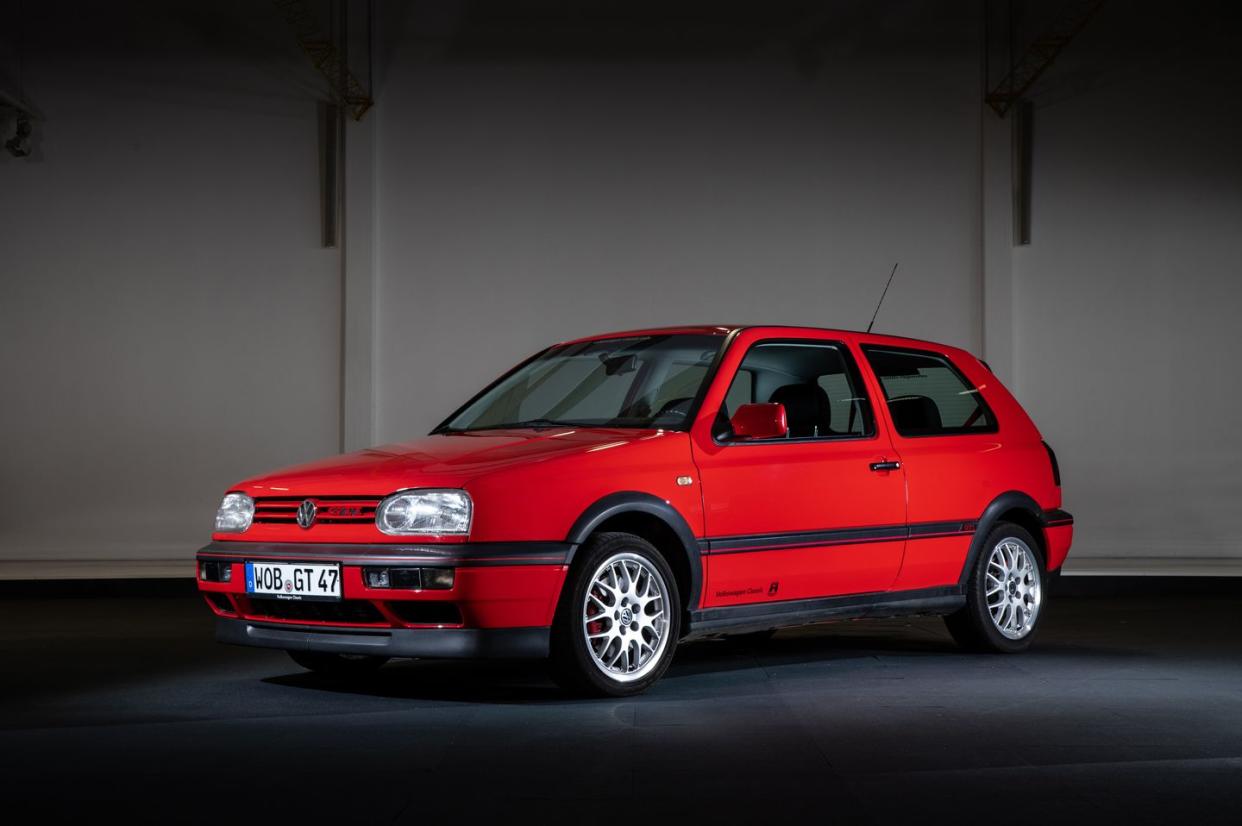
Mk 3 GTI
The Golf Mk 3 GTI marks the point where the tightly grouped GTI core attributes started to fan out. True, it brought speed, a little in the 115-hp 2.0-liter inline-four and much more in the later 172-hp VR6. But it also brought weight, and the need to cram in as many mod cons as possible eroded some of its simple charm. Eventually it even got brake-based traction control, something that might as well have been from another planet during the Mk 1's reign.
But competitors had moved into the segment, and VW needed to remain in the hunt. Faster in the real world and better on paper in nearly every respect, the Mk 3 GTI still delivers; every control operates with a newfound linear precision, but it's a less involving driving experience, and its soft, androgynous exterior styling—although a hint of the OG mojo appears in the taillamps—fails to capture its Teutonic breeding. It's good bet that VW's effort to move closer to the center will make it less desirable as a classic than the Mk 1 and Mk 2.
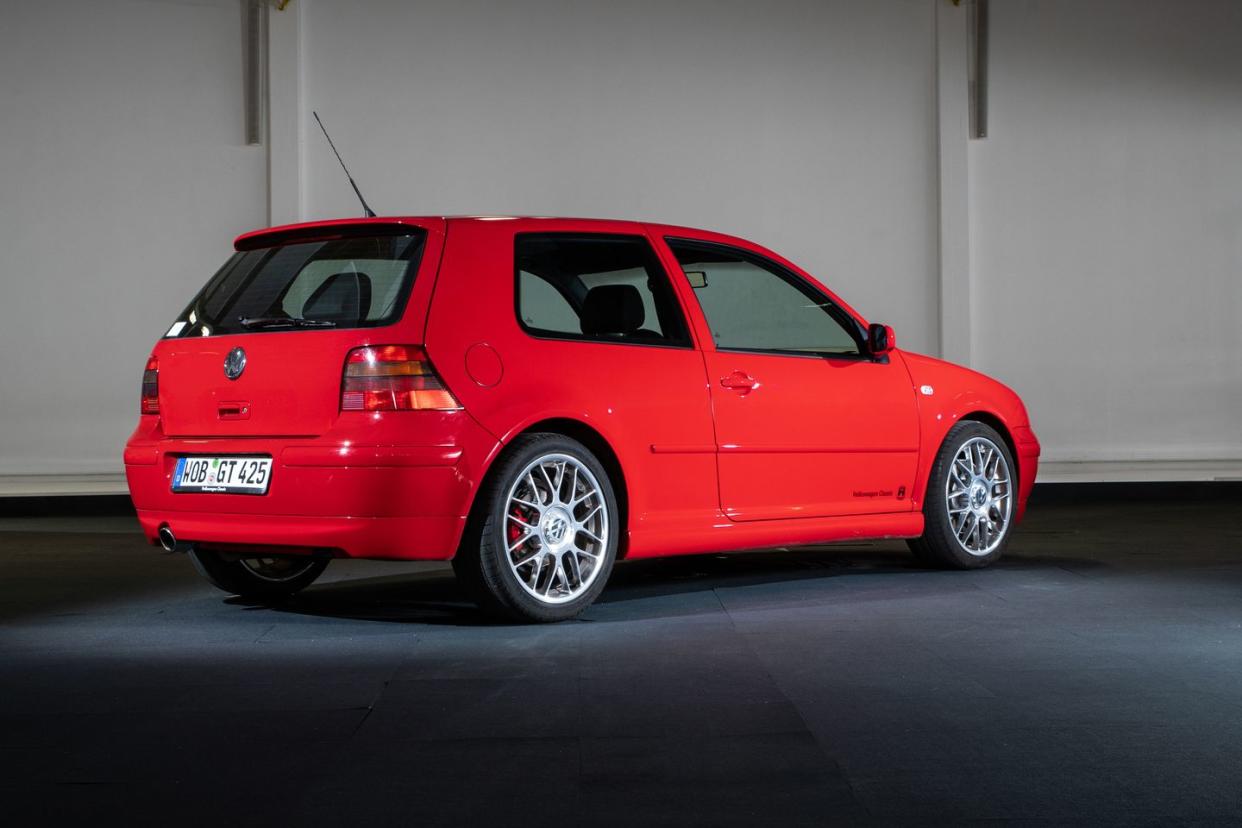
Mk 4 GTI
The Mk 4 continued the same path, taking the Mk 3's blob styling and pulling it into a slightly tighter shape. The Mk 4 made a conscious effort to move the entire Golf franchise higher upmarket, with more standard equipment and higher-quality materials. In terms of the GTI, that meant several engine options over its life span, including the turbocharged 1.8-liter four from the Passat, Audi A4, and Audi TT and the 174-hp 2.8-liter V-6.
Experiencing the Mk 4 GTI today, the best thing I can say is it feels fully competent. The styling is toned down, and internally, the GTI had become a trim level rather than a stand-alone model. It was clearly following rather than leading at this point, and therefore the car lacks the kind of unique or groundbreaking features that make history.
On the other hand, the Mk 4 did become a willing canvas for an entire new generation of VW enthusiasts, most of whom had little interest in entertaining the oldsters' tales of MK 1 and Mk 2 feats of greatness. But off the shelf, it doesn't inspire the devout allegiance of the Mk 1 and Mk 2. No, that honor falls to the Mk 4–based Golf R32 that landed in 2004. Featuring all-wheel drive, a 238-hp 3.2-liter version of the VR6, and every luxury option available, it was the first modern production car offered with a dual-clutch transmission. Although the R32 was expensive, it at least demonstrated that the lights were on in Wolfsburg.
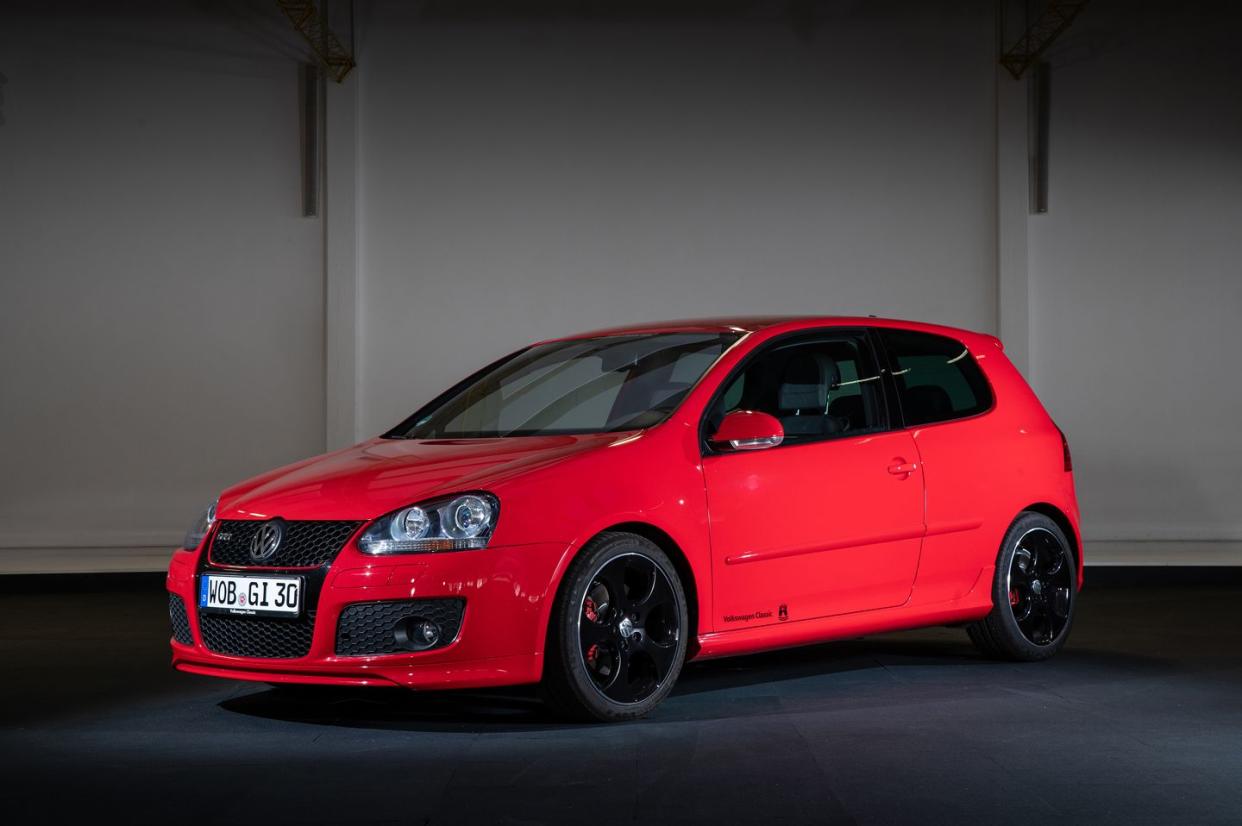
Mk 5 GTI
The Mk 5 hit the scene in 2004 in Europe and 2006 in the States, bringing with it the GTI mojo lost in previous gens. Marking a return to form for the die-hards, it managed to blend recent advancements in tech with the joyous cut-and-run personality of the early models. As evidenced by our short drive, it successfully blends a forward-thinking essence— similar to what the Mk 2 displayed in its heyday—with newfound urgency.
Fit, finish, and material quality are dramatically improved. The doors close with newfound accuracy and maintain perfect panel gaps; gone are the old overstuffed doorjamb weatherstripping applications that required a second "push" to fully close the door. Power comes from a 200-hp turbocharged 2.0-liter four-cylinder capable of propelling the GTI to a top speed of 146 mph. The dual-clutch DSG transmission migrated to the GTI from the R32 (which also returned in 2008), and all the components (engine, transmission, chassis) work with mutual respect that delivers the kind of balance that makes a great driver's car regardless of what the spec sheet says. Then and now, the Mk 5 reasserted the GTI’s friendly, willing personality that made it so popular back in the day. But good as it was/is, things were about to get even better.
Mk 6 GTI
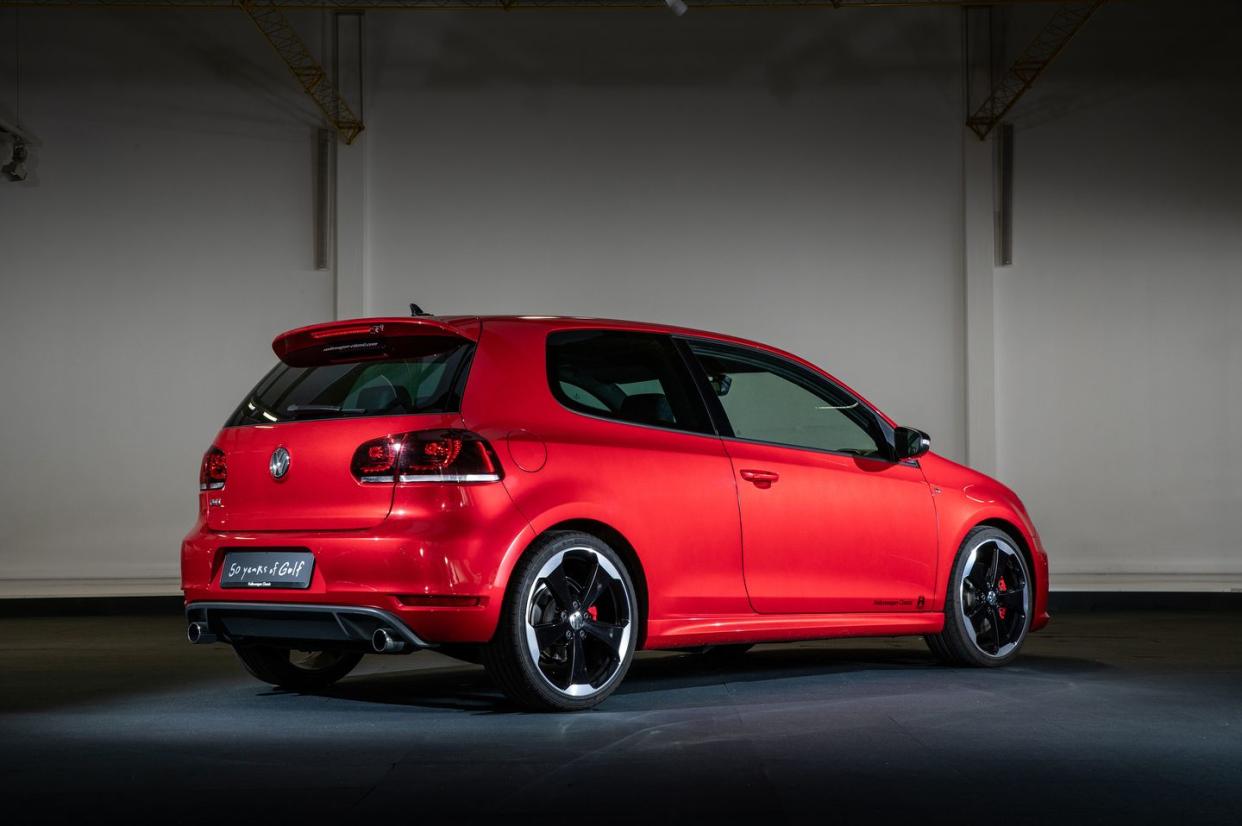
For many of us, the Mk 6 GTI isn't old enough to invoke feelings of nostalgia. Even if just keeping up appearances, the Mk 6 at least didn't do anything embarrassing to spoil the progress made by the Mk 5. In fact, it took the styling in a more modern and serious direction and included a sophisticated interior for a new generation of buyers. A new turbocharged 200-hp four-cylinder took up residence under the GTI's hood and mated with either a six-speed manual or Volkswagen's DSG dual-clutch. Driven today, it had a bit more wind and road noise, but ultimately, it was hard to conceive of it as anything but a well-maintained used car, one that we'd gladly sign up for a tour of duty with if we could find one that hadn't been deservedly thrashed by its previous owner. (Not that we'd ever succumb to such behavior ourselves.)
Mk 7 GTI
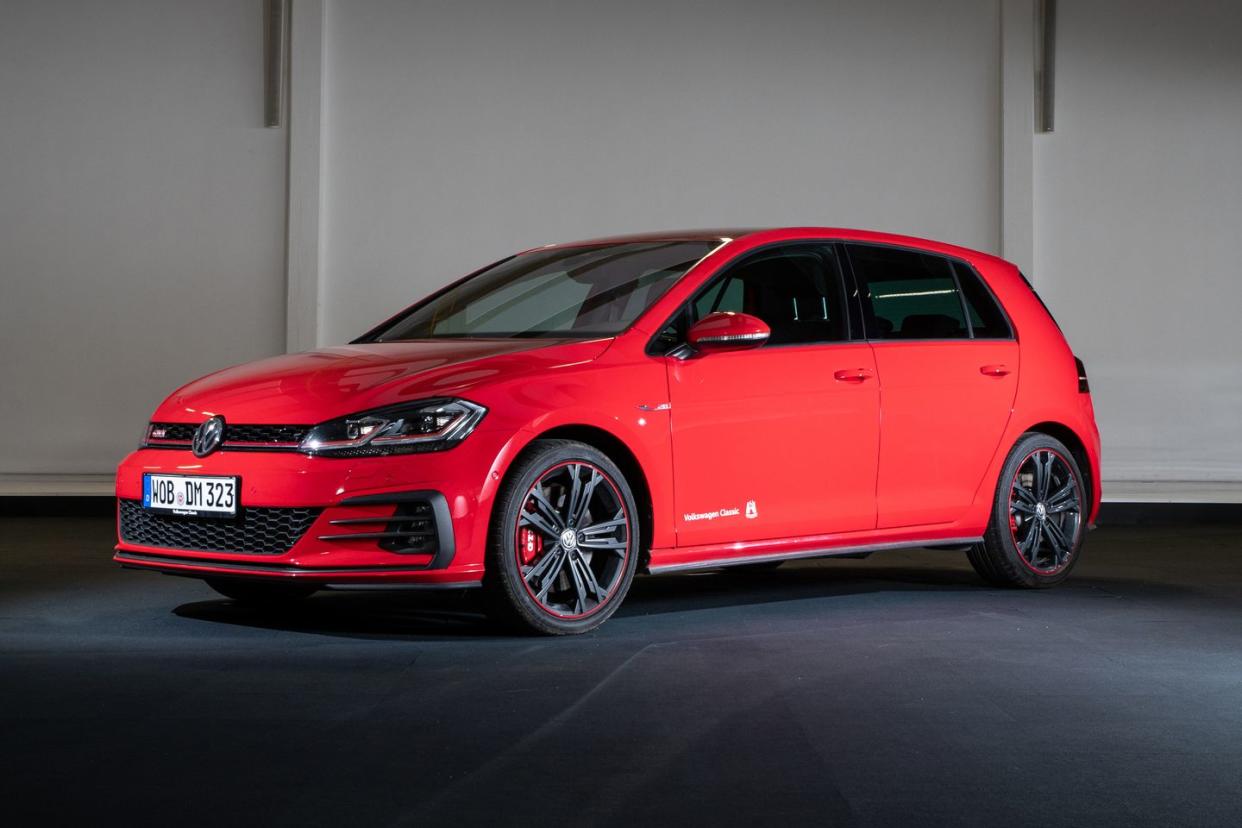
If the Mk 6 GTI can barely be considered history, the Mk 7 is essentially a current product. The first Golf GTI to be constructed using VW's now ubiquitous MQB platform, the Mk 7 went on sale in the U.S in 2015. Its styling remains current, the 210-hp turbocharged 2.0-liter (up 10 from the Mk 6) still provides instantaneous thrust, and an available performance package brings 10 additional ponies along with larger front and rear brakes and an electronically controlled mechanical limited-slip front differential. Adaptive dampers also join the options list.
Driving it in Germany lent a certain amount of authenticity to the proceedings, but it really only confirmed the findings of our not-that-long-ago Mk 7 long-term test, wherein our staffers nearly universally declared it the best GTI yet.
Still, the Mk 7's run hosted some landmark events in the GTI's timeline, including becoming the first GTI to top 150 mph. Special models included the GTI Performance, GTI Clubsport, and, to commemorate its 40th anniversary, the GTO Clubsport S, which ditched the rear seats and replaced the steel subframes with aluminum in a quest to set a new front-wheel-drive record at the Nürburgring. It succeeded. Today, however, it's just well-sorted example that retains all the charm it displayed when new.
Mk 8 GTI
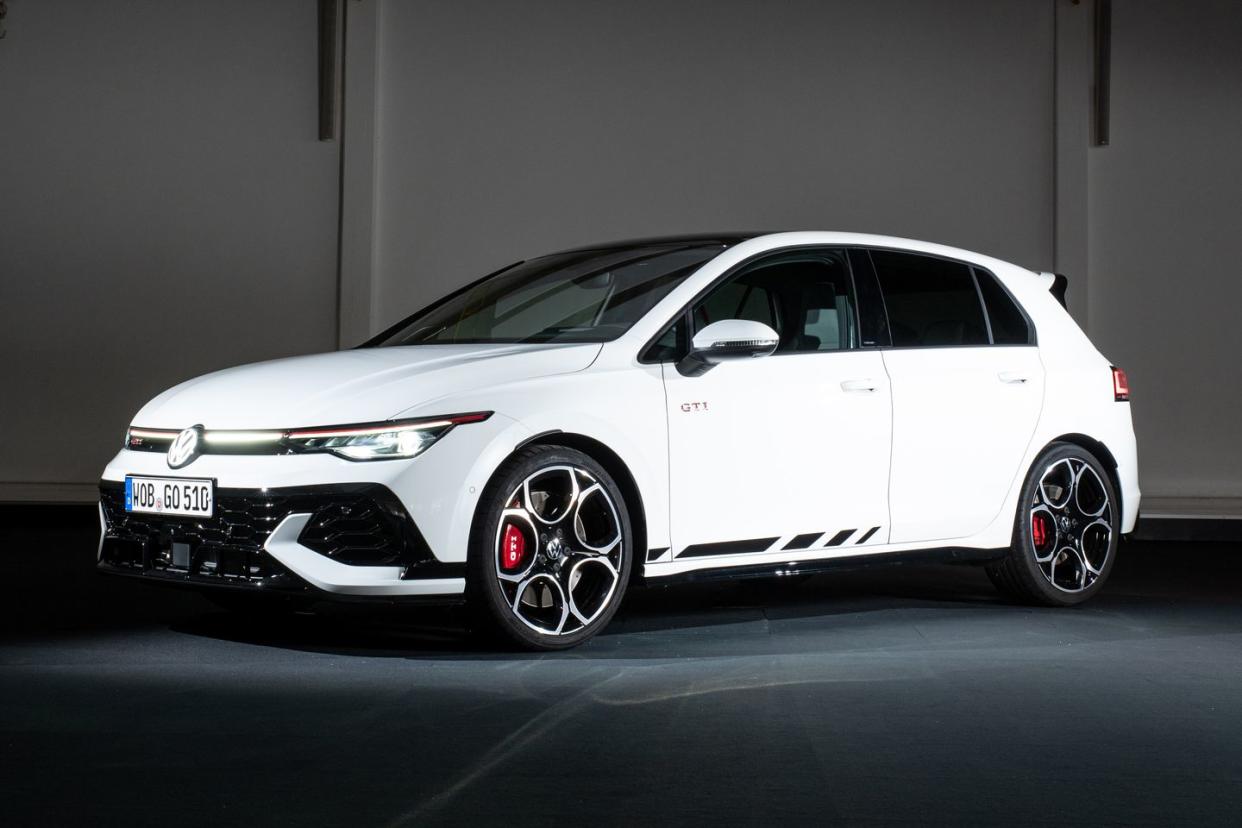
Though the Mk 8 GTI is just now winding up its run (a mildly updated 2025 GTI Mk 8.5 is waiting in the wings), it serves as an ideal digestif to the day, a sweet comprehensive summary of how far the GTI has come. It too served as a long-term C/D test vehicle and once again confirmed our belief that the GTI remains true to its iconoclast legacy while embracing enough modernity to soothe the modern driver.
As for me? Well, I've discovered some kindred souls at the office, and I've reupped my logins at all the VW forums. I don't think it'll be a problem, just a little taste to remind me of my youth. Did I mention I saw clean Mk 2 right near our office? I might roll by at lunchtime; you know, just to take a casual look.
You Might Also Like
